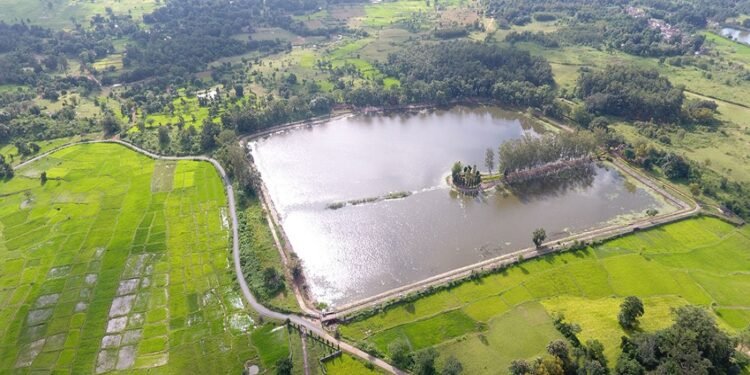Benisagar, also known as Benusagar, is a hidden gem located in the Majhgaon Block of West Singhbhum district in Jharkhand, India. Situated close to the border of Mayurbhanj district in Orissa, this village holds a rich historical and archaeological significance. Let’s delve into the fascinating history and discoveries of Benisagar.
The village gets its name from a large tank, which is approximately 300 meters by 340 meters in size. It is believed that the tank was excavated by a person named Benu Raja, after whom the village is named. However, archaeological evidence to support this claim is yet to be ascertained. The first recorded mention of Benisagar was made by Colonel Tickel in 1840, followed by J.D. Beglar’s visit in 1875, who noticed sculptures and dated the site to the 7th century AD.
Excavations carried out by the Archaeological Survey of India have revealed a wealth of historical artifacts and structures in Benisagar. The southeast and eastern embankments of the tank have brought to light a complex of two Panchayatana temples, along with secular structures and numerous sculptural remains. Among the discovered images are depictions of Surya, Bhairava, Lakulisha, Agni, Kubera, and many more.

One particularly intriguing find is a stone seal with the inscription “Priyangu Dheyam Chatuvidya(Chaturvidya),” which translates to “Priyangu, well versed in the four Vedas.” The inscription is written in the Brahmi script and the language used is Sanskrit. Based on paleographic analysis, it is estimated to date back to the 5th century AD. These discoveries indicate that the site was inhabited from the 5th century AD to the 16th – 17th century AD.
In the field season of 2009-10, the Archaeological Survey of India, Ranchi Circle, conducted scientific clearance work in Benisagar. This excavation brought to light a number of Panchayatan temples within the modern boundary wall. The sculptures discovered include Agni, Ganesh, Mahisasurmardani, Surya, Brahma Sirochhedak, Bhairav, and many more. Additionally, a panel of stone depicting erotic scenes and various fragments of sculptures, Yamuna, Shiva lingas, temple architectural fragments, door lintels, and door jambs were also unearthed.
The discoveries at Benisagar provide us with a glimpse into the rich cultural and religious history of the region. The presence of Panchayatana temples suggests the practice of worshiping multiple deities, a common tradition in ancient India. The intricate sculptures depict various gods and goddesses, showcasing the artistic prowess of the craftsmen of that era.

Visiting Benisagar is like stepping back in time, allowing you to witness the remnants of an ancient civilization. The sheer size of the tank and the intricate details of the sculptures are awe-inspiring. Exploring the site and immersing yourself in its history is a truly unique experience.
In conclusion, Benisagar is a historically significant village in Jharkhand, India, known for its large tank and ancient temples. The archaeological discoveries made here shed light on the religious practices and artistic skills of the people who once inhabited this area. If you have a fascination for history and ancient civilizations, a visit to Benisagar should definitely be on your bucket list. It’s an opportunity to connect with the past and appreciate the rich cultural heritage of India.



























